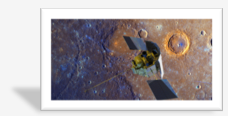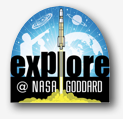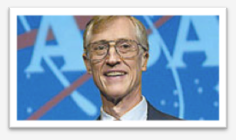 NASA is offering students the opportunity to compete in two microgravity challenges: “Dropping In a Microgravity Environment,” or DIME, and “What If No Gravity?” or WING.
NASA is offering students the opportunity to compete in two microgravity challenges: “Dropping In a Microgravity Environment,” or DIME, and “What If No Gravity?” or WING.
DIME is a team competition for high school students in the ninth through 12th grades. WING is a competition for student teams from the fifth through eighth grades. Both are project-oriented activities that last throughout the school year for the selected teams.
DIME and WING are open to student teams from all 50 states, Washington, Puerto Rico, Guam, the Commonwealth of the Northern Mariana Islands and the U.S. Virgin Islands. Each team must have an adult supervisor, such as a teacher, parent or technical consultant. Teams may be from any type of organization or club, such as a science class, a group of friends, a scout troop or youth group.
Proposals are due by Nov. 1. A panel of NASA scientists and engineers will evaluate and select the top-ranked proposals by Dec. 1. The winning teams will design and build the experiments that will be conducted in the 2.2-Second Drop Tower at NASA’s Glenn Research Center in Cleveland.
The 79-foot tower gets its name because when an experiment is “dropped” into it, the package experiences weightlessness, or microgravity, for 2.2 seconds. Researchers from around the world use this tower to study the effects of microgravity on physical phenomena, such as combustion and fluid dynamics, and to develop new technology for future space missions.
The top four DIME teams will receive an expense-paid trip to Glenn in March 2012 to conduct their experiments, review the results with NASA personnel and tour the center’s facilities. All DIME participants visiting NASA must be U.S. citizens.
Four additional DIME teams, and up to 30 WING teams, will be selected to build their experiments and ship them to Glenn for NASA testing. These experiments and the resulting data will be returned to the teams, so they can prepare reports about their findings.
Link to the NES Virtual Campus.

 If you’re 14 to 18 years old, come up with a science experiment for space and upload a video explaining it to YouTube. If your idea wins, it will be performed on the International Space Station and live streamed on YouTube to the world. And you’ll get some out-of-this-world prizes, too.
If you’re 14 to 18 years old, come up with a science experiment for space and upload a video explaining it to YouTube. If your idea wins, it will be performed on the International Space Station and live streamed on YouTube to the world. And you’ll get some out-of-this-world prizes, too. NASA will host a news conference at 1 p.m. EDT on Thursday, June 16, to reveal new images and science findings from the first spacecraft to orbit Mercury. The event will be held in the NASA Headquarters. NASA Television and the
NASA will host a news conference at 1 p.m. EDT on Thursday, June 16, to reveal new images and science findings from the first spacecraft to orbit Mercury. The event will be held in the NASA Headquarters. NASA Television and the  In this episode of NASA Now, Trent Martin, project manager for the Alpha Magnetic Spectrometer experiment at Johnson Space Center in Houston, explains how NASA will try to answer one of the fundamental questions in modern physics: “What happened to the primordial antimatter?”
In this episode of NASA Now, Trent Martin, project manager for the Alpha Magnetic Spectrometer experiment at Johnson Space Center in Houston, explains how NASA will try to answer one of the fundamental questions in modern physics: “What happened to the primordial antimatter?”

